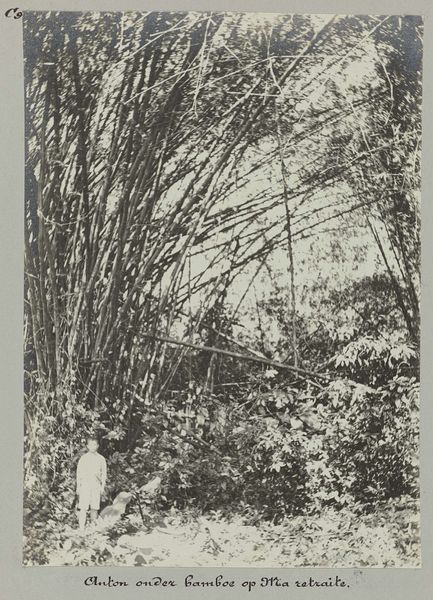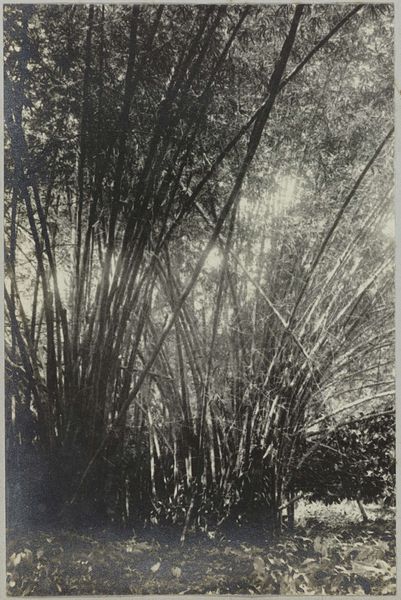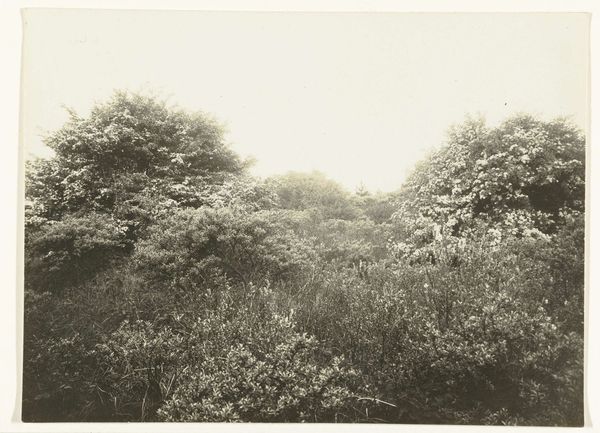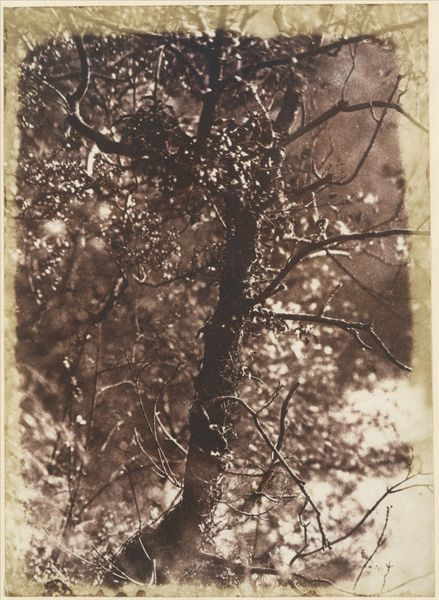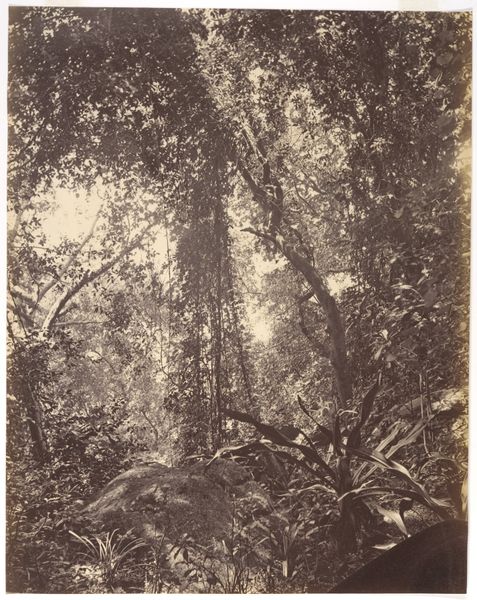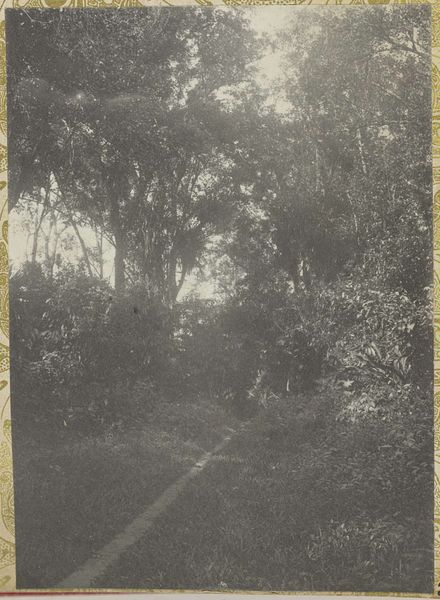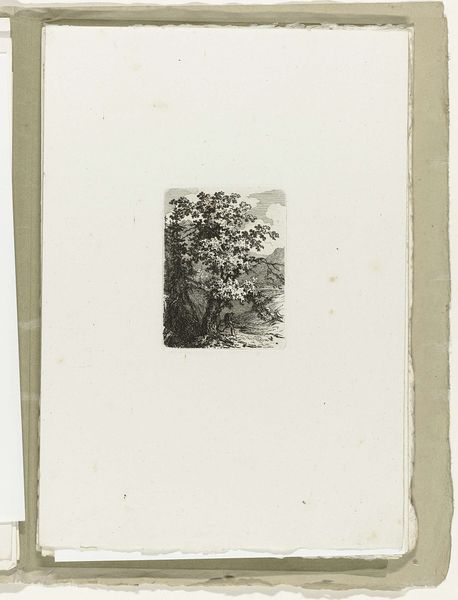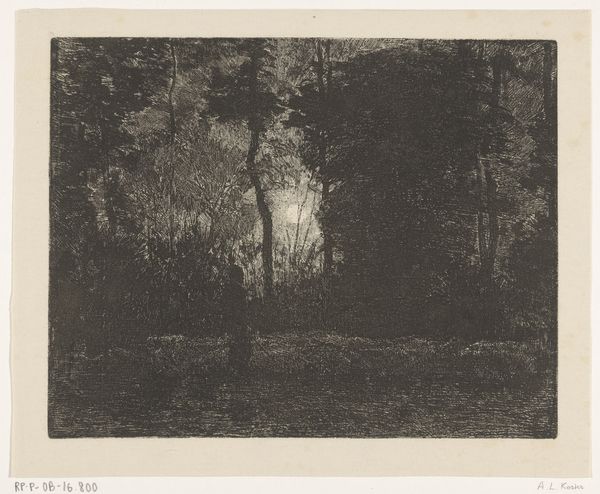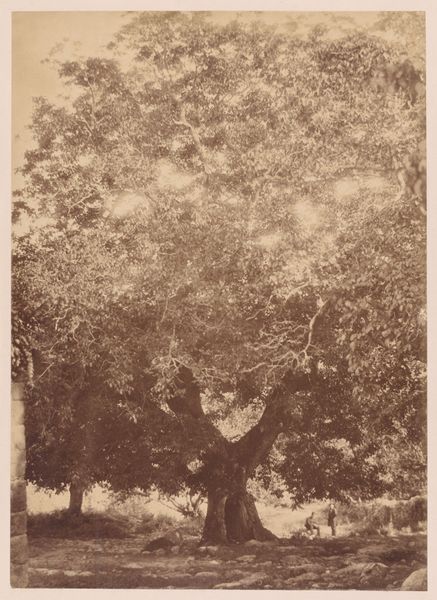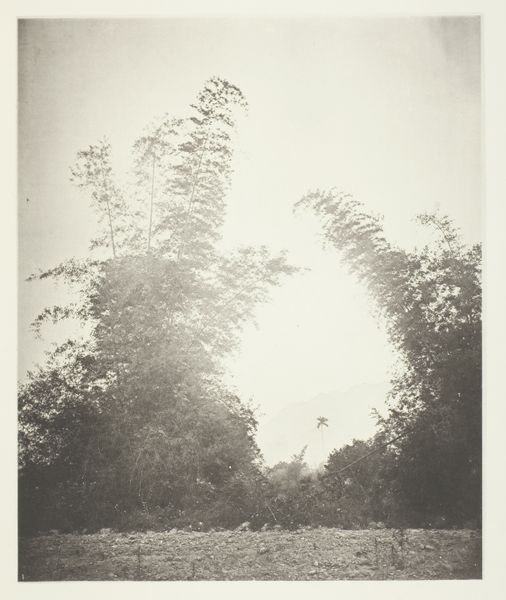
photography
#
landscape
#
nature
#
photography
#
realism
Dimensions: height 172 mm, width 122 mm
Copyright: Rijks Museum: Open Domain
Editor: Here we have Hendrik Doijer's "Bamboe op Tourtonne," a photograph from the early 1900s. It depicts a dense cluster of bamboo. What I find striking is the play of light filtered through the leaves. What strikes you about it? Curator: As a materialist, I'm drawn to considering the act of photographing itself. Photography democratized representation, making images more accessible and challenging traditional artistic hierarchies. What impact might that accessibility have had? Editor: Well, maybe photography, in contrast to painting, made art more closely tied to production or the everyday… since images became more affordable and common. Curator: Exactly. Doijer's choice of subject - bamboo in a colonial context - is crucial. How does the mechanical reproduction of this "exotic" landscape factor into the economics and consumption patterns of the early 20th century? Editor: So it's not just about a pretty scene; it's also about the materials and social implications involved in its production and circulation as an image, something meant to be viewed in the West? Curator: Precisely! Consider the materiality of the photograph itself – the paper, the chemicals, the printing process, the labor involved in creating and distributing this image. Think of the market it fed. Does that shift your understanding of the work? Editor: Absolutely. It's much more than just a tranquil image. The photo is also a kind of manufactured object itself that played into broader material conditions of that era. It almost prompts us to think about things that were *not* photographed, like other commodities! Curator: Right. By examining the material conditions surrounding "Bamboe op Tourtonne," we gain a much richer understanding of the social forces at play in its creation and reception. Editor: Thanks; it definitely changes how I think about photography! I never considered its production, material, and social implications as crucial as the image itself.
Comments
No comments
Be the first to comment and join the conversation on the ultimate creative platform.
